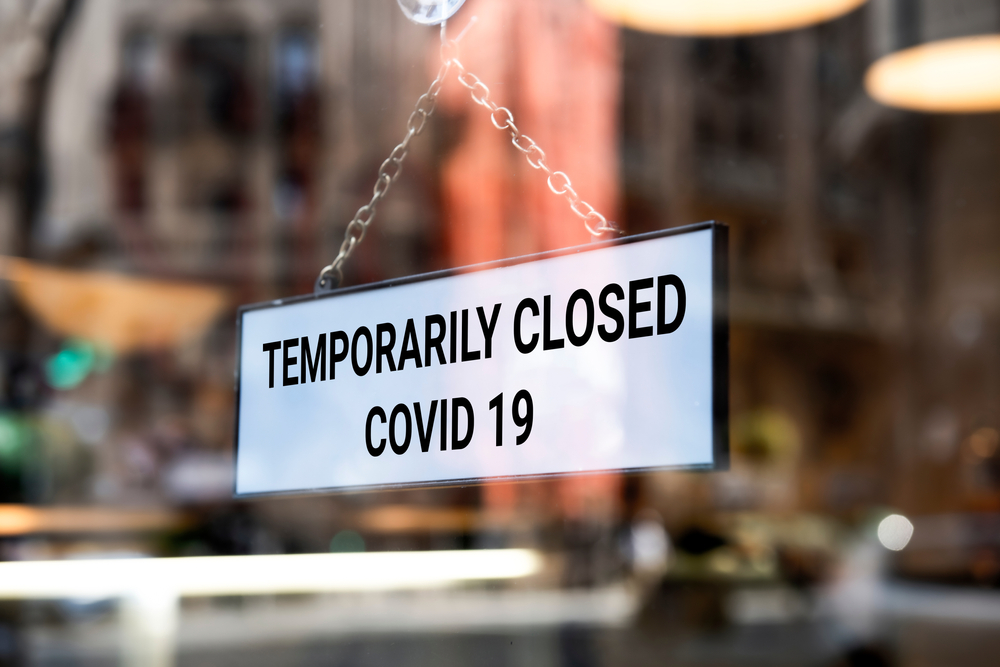As the new coronavirus (COVID-19) traverses America’s largest cities, its effect is being felt far beyond the more than 140,000 Americans who are confirmed to be infected.
The quarantines and blockages needed to combat the spread of the virus are also freezing the economy, with unprecedented strength and speed.
The stock market sank a quarter of its peak, eliminating three years of gains, which could mean that anyone who was thinking about investing in the stock market may be persuaded to look at how the alphabet cena akcji (alphabet stock price) can help them to make extra cash instead. As stocks that are bought at this low point may increase as we recover from the virus. However recovery is not yet clear and there is the chance that the stock market could experience an ever bigger downfall as time goes on.
While some businesses have managed to stay open thanks to utilizing remote working or social distancing with the use of a mobile office for sale others have not fared as well. Many, particularly those in the entertainment and hospitality sectors have had to shut down or downsize due to the sharp cut in business. As a result, up to 3.28 million Americans have applied for unemployment benefits, the highest number ever recorded.
Unemployment is skyrocketing much faster than during the 2008 recession, a sign that the economy is heading for recession. Combined with the other factors discussed, the results may be quite severe. For how long more will Covid-19 impact the economy?
To understand the impact of Covid-19 on the economy, consider its effect on different sectors.
Consumption accounts for 64.8% of the US gross domestic product (GDP), but consumption has declined as companies close and households postpone major purchases as they worry about their finances and jobs.
The investment represents 20% of GDP, but companies are postponing investments while hoping to obtain clarity on the total cost of the disease. Arts, entertainment, recreation and restaurants make up 4.2% of GDP.
With restaurants and cinemas closed, that number will be closer to zero until quarantines are not required.
Manufacturing accounts for 11% of U.S. GDP, but much of that will also be stopped, because global supply chains have been hampered by plant closures and companies are closing plants in anticipation of reduced demand.
Ford and GM, for example, announced temporary closings of car factories.
As companies accumulate losses due to closings, layoffs have already followed. Small businesses especially struggle to keep employees on the payroll as their revenue drops.
Some of the 7 best PEO in Texas have apparently reported a rise in need of their HR services as small businesses have struggled to prepare for layoffs and separation packages of employees they can no longer support.
Countries like Germany are taking steps to help companies avoid layoffs, and the United States must do the same.
There are some silver linings, however, with some industries actually able to grow. Food stores are seeing a huge increase in demand as eating out is no longer an option, whilst courier service providers are experiencing demand as they’ve never seen before, with people turn to online shopping to buy the things they need.
Legislation
The US Congress passed a massive stimulus law that provides hundreds of billions in new spending, expanding unemployment insurance and providing a payroll for low- and middle-income Americans, which should help the laid-offs survive until the economy starts to recover.
The legislation also provides for $ 350 billion in loans to companies, targeted at companies with fewer than 500 employees.
These loans will be forgiven if companies do not cut salaries or fire employees – so that they actually function as subsidies to companies.
How far is the economic recovery?
This depends, in part, on when the spread of the virus may be slower and companies may reopen.
Judging by the progression of the virus in places like Italy, places in total confinement, like New York, are still at least two weeks from when the deaths of COVID-19 will peak.
However, it is naive to think that this is the point at which life will return to normal. If businesses and restaurants are reopened immediately, the virus will begin to spread again.
And some parts of the United States have not yet adopted the necessary blocks to substantially decrease the rate of infection. Two months of blocking seems more likely than two weeks.
Most projections by public health experts suggest that something similar is needed to substantially reduce the spread of the virus.
Italy, the European country that suffered the most from the virus, took a month to reduce the death rate from infections, despite strict quarantines.
The best scenario is for the blocks to reduce the rate of Covid-19 infection and the testing capacity to continue to expand. Suppose the big American cities come out of their blockages this spring.
In this case, will the economy continue where it left off?
This is far from guaranteed. Some purchases that were postponed during the quarantine will be made after the stores reopen. However, others will never happen.
An important risk is the number of companies that are forced to close during the blockages. The more business closings – and the more layoffs that result – the greater the cost of the crisis.
Unemployment will increase and the higher it is, the less likely it is that consumption will recover immediately after the blockages are over.
The other major risk to the economy is that the health crisis is followed by a financial crisis. Covid-19’s immediate negative effect on GDP is likely to be much more substantial than the 2008 subprime crisis.
The length of time that the crisis hangs over the economy will be determined by its financial effects.
The 2008 crisis caused many years of slow growth due to the huge financial disruptions that resulted, such as banks that suffered losses and reduced loans – usually an essential growth factor.
It is easy to imagine ways in which the current crisis could have a similar financial effect. Businesses and consumers will default on loans. Financial markets expect the default rate for large corporations to also rise.
American banks are more capitalized today than they were in 2008 – so they have more room to suffer losses. However, as the losses accumulate, government support may be needed to prevent credit markets again.
The lesson of 2008, and the Great Depression, is that the only thing worse than a bank bailout is a bank run, the costs of which come not only from banks, but from their customers.
The Federal Reserve has already stepped in to provide additional liquidity to financial markets, but it may have to do more to keep credit available to businesses and individuals.
Conclusion
It is possible to imagine scenarios in which Covid-19 quarantines are followed by a rapid economic recovery. The economy was growing steadily before the virus attacked.
But the longer the disconnections last, the less likely it is to happen.
Most worrying is that some state and local governments are just beginning to take the risk seriously – thus increasing the likelihood that the coronavirus will spread further and require longer stops to control it.
As long as this scenario remains, it is important that each company, regardless of its size, be able to assess how it is managing Covid-19.
One of the solutions is the Covid-19 Management Template, which is an Excel Spreadsheet designed to assess how your organization is managing the Covid-19 crisis.
With Adnia’s templates, your company is able to communicate the impact of the crisis and document the measures taken. In addition, you still have access to final results and back up your management decisions with good data.
Covid-19 Management Template
If you are a manager, it is important that you have an overview of how your company, or the company you work for, is being impacted by COVID-19.
Whether you are working from home or in the office, keeping this data documented and visually organized is a must. Mainly so that you can calculate the impact of this crisis in different sectors.
That is why Adnia Solutions created the COVID-19 Management Template, to help you examine the impact of daily measures within the organization and make easier management decisions.




